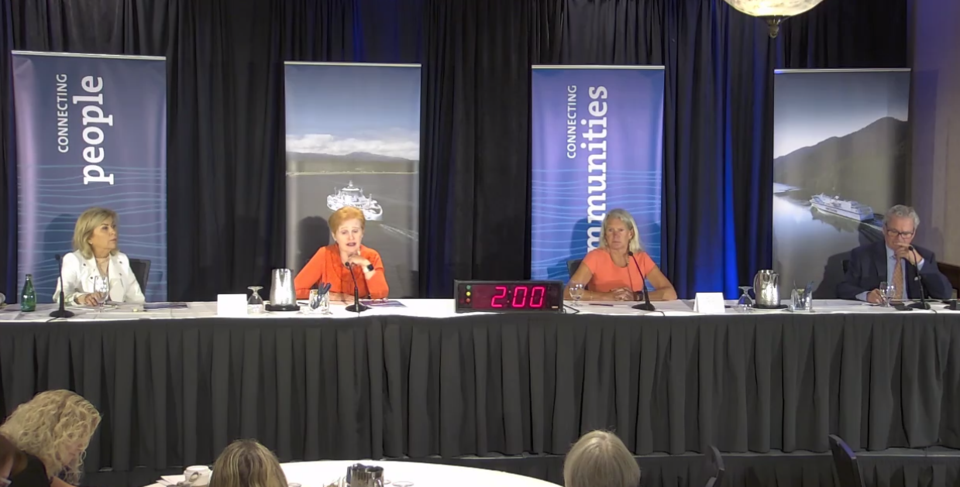BC Ferries representatives at the company’s Aug. 18 Annual General Meeting (AGM) said that service to the Sunshine Coast is tied for the “hot spot” of service concerns within its system. Potential improvements, including “capacity expansion” for Route 3 will be discussed with the province after its “performance term 6” Commissioner’s submission is made Sept. 30.
Chair of BCF’s Board, Joy McPhail said that information will be made available publicly on its website. The other service “hot spot” was identified as the Denman and Hornby Island routes.
Adding capacity on Route 3 between Horseshoe Bay and Langdale terminals will be “challenging as it will require a whole new crew to add a second vessel” in a time when BCF is struggling to attract and retain the trained staff needed to keep up with current demands, Jill Sharland, BCF’s Interim President and Chief Executive Officer stated. She said the expansion may not be ready for summer 2023, but that it was on the “sonar” for BCF to address. “When it comes down to it, it requires funding,” she said, noting the importance of discussing the subject with the province at the next opportunities this fall.
Lots of questions on Route 3
Just over half of the two-hour AGM was dedicated to questions from attendees. Almost a third of the 20 online and in-person audience members who took to the mic identified themselves as residents of the Sunshine Coast. Several spoke up more than once.
Local Robert Dahl asked BCF to improve how it shares data regarding space available on upcoming sailings, as the current practice “leaves people on the hot tarmac [at terminals] because of the inaccurate information.” McPhail responded, saying “BC Ferries recognizes this needs to be fixed ASAP.” She noted that in two meetings she attended with Ferry Advisory Committee Chairs leading up to the AGM, there had been “robust discussion” on this issue, that included new options for assessing traffic volumes and that BCF would be looking into them all.
The importance of assuring loading on the next sailing for those checking in with Travel Assistance Program (TAP) forms to attend off-Coast medical appointments was raised by Gibsons resident Lisa Costa. She said that in summer, when sailing reservations are often booked up weeks in advance, those with TAPs, who may have serious health conditions, can be forced to wait for hours to travel. She pointed out that patients don’t control when appointments are booked or when there are delays at medical facilities or with traffic.
Sharland countered that request by saying additional assured loadings could complicate procedures at the terminal. Costa pointed out that on Route 3 there would likely never be more than five vehicles travelling with TAPs on any sailing. Sharland responded, saying that with less than a month in her new role, she needed to do more to understand the complexities of the different routes, but that BCF’s reservation system is being constantly refined. “We will get better,” she said and she repeated that sentiment as she responded to a submission that detailed how securing reservations adds $30, more than 50 per cent, to the costs of vehicle ferry travel on Route 3.
She also committed to “looking into” programs to give frequent travellers, such as Coast residents using Route 3, some form of priority in response to questions from Coasters Chris Pugh and Scott Flemming.
Submissions about the Denman/Hornby services and from the Ferry Workers Union rounded out the public question period. With both McPhail and Sharland in their roles for less than two months before the AGM, they and Lecia Stewart, Chair of the B.C. Ferry Authority provided few detailed responses to questions posed.
More listening and engaging promised
In her opening address at the meeting, McPhail stated that BCF was “committed to taking a fresh approach through listening and putting people first.”
Sharland’s AGM presentation included a statement of commitment to “strong and lasting relationships with the communities we serve,” and to “engage regularly to ensure that happens.”



